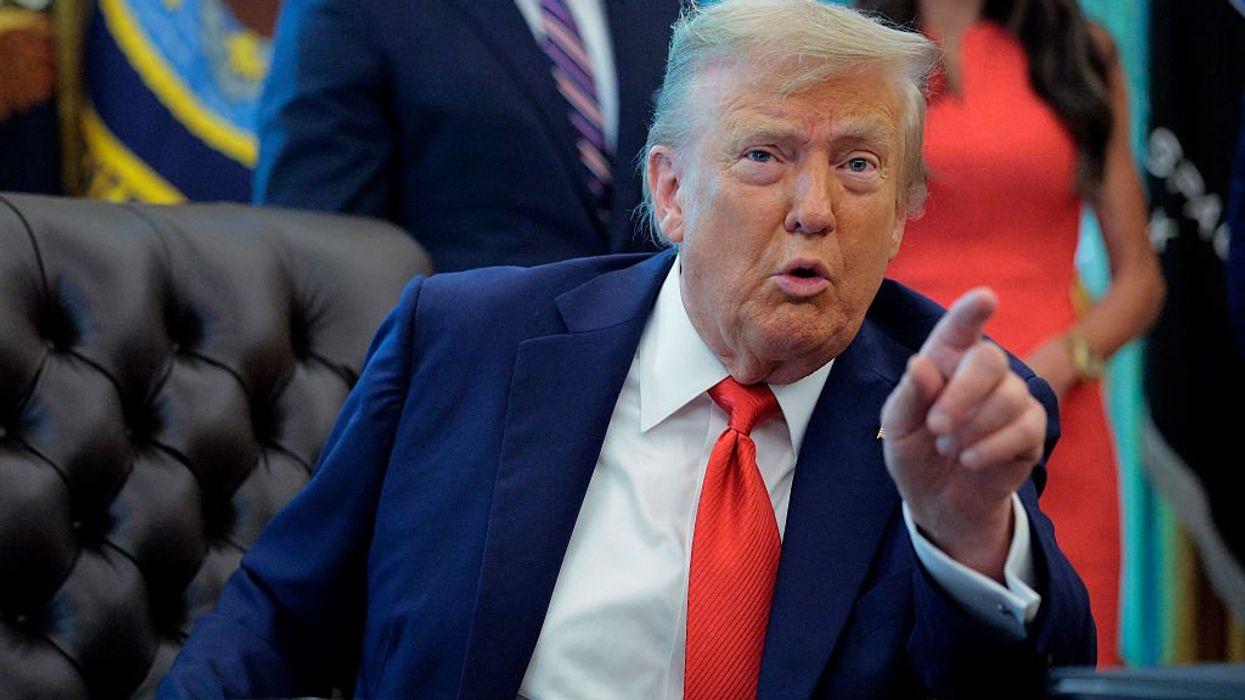From surveillance abuse to censorship, the deep state used state power and private institutions to suppress dissent and influence two US elections.
The term “deep state” has long been dismissed as the province of cranks and conspiracists. But the recent declassification of two critical documents — the Durham annex, released by Sen. Chuck Grassley (R-Iowa), and a report publicized by Director of National Intelligence Tulsi Gabbard — has rendered further denial untenable.
These documents lay bare the structure and function of a bureaucratic, semi-autonomous network of agencies, contractors, nonprofits, and media entities that together constitute a parallel government operating alongside — and at times in opposition to — the duly elected one.
The ‘deep state’ is a self-reinforcing institutional machine — a decentralized, global bureaucracy whose members share ideological alignment.
The disclosures do not merely recount past abuses; they offer a schematic of how modern influence operations are conceived, coordinated, and deployed across domestic and international domains.
What they reveal is not a rogue element operating in secret, but a systematized apparatus capable of shaping elections, suppressing dissent, and laundering narratives through a transnational network of intelligence, academia, media, and philanthropic institutions.
Narrative engineering from the top
According to Gabbard’s report, a pivotal moment occurred on December 9, 2016, when the Obama White House convened its national security leadership in the Situation Room. Attendees included CIA Director John Brennan, Director of National Intelligence James Clapper, National Security Agency Director Michael Rogers, FBI Deputy Director Andrew McCabe, Attorney General Loretta Lynch, Secretary of State John Kerry, and others.
During this meeting, the consensus view up to that point — that Russia had not manipulated the election outcome — was subordinated to new instructions.
The record states plainly: The intelligence community was directed to prepare an assessment “per the President’s request” that would frame Russia as the aggressor and then-presidential candidate Donald Trump as its preferred candidate. Notably absent was any claim that new intelligence had emerged. The motivation was political, not evidentiary.
This maneuver became the foundation for the now-discredited 2017 intelligence community assessment on Russian election interference. From that point on, U.S. intelligence agencies became not neutral evaluators of fact but active participants in constructing a public narrative designed to delegitimize the incoming administration.
Institutional and media coordination
The ODNI report and the Durham annex jointly describe a feedback loop in which intelligence is laundered through think tanks and nongovernmental organizations, then cited by media outlets as “independent verification.” At the center of this loop are agencies like the CIA, FBI, and ODNI; law firms such as Perkins Coie; and NGOs such as the Open Society Foundations.
According to the Durham annex, think tanks including the Atlantic Council, the Carnegie Endowment, and the Center for a New American Security were allegedly informed of Clinton’s 2016 plan to link Trump to Russia. These institutions, operating under the veneer of academic independence, helped diffuse the narrative into public discourse.
Media coordination was not incidental. On the very day of the aforementioned White House meeting, the Washington Post published a front-page article headlined “Obama Orders Review of Russian Hacking During Presidential Campaign” — a story that mirrored the internal shift in official narrative. The article marked the beginning of a coordinated media campaign that would amplify the Trump-Russia collusion narrative throughout the transition period.
Surveillance and suppression
Surveillance, once limited to foreign intelligence operations, was turned inward through the abuse of FISA warrants. The Steele dossier — funded by the Clinton campaign via Perkins Coie and Fusion GPS — served as the basis for wiretaps on Trump affiliates, despite being unverified and partially discredited. The FBI even altered emails to facilitate the warrants.
 ROBYN BECK / Contributor | Getty Images
ROBYN BECK / Contributor | Getty Images
This capacity for internal subversion reappeared in 2020, when 51 former intelligence officials signed a letter labeling the Hunter Biden laptop story as “Russian disinformation.” According to polling, 79% of Americans believed truthful coverage of the laptop could have altered the election. The suppression of that story — now confirmed as authentic — was election interference, pure and simple.
A machine, not a ‘conspiracy theory’
The deep state is a self-reinforcing institutional machine — a decentralized, global bureaucracy whose members share ideological alignment and strategic goals.
Each node — law firms, think tanks, newsrooms, federal agencies — operates with plausible deniability. But taken together, they form a matrix of influence capable of undermining electoral legitimacy and redirecting national policy without democratic input.
The ODNI report and the Durham annex mark the first crack in the firewall shielding this machine. They expose more than a political scandal buried in the past. They lay bare a living system of elite coordination — one that demands exposure, confrontation, and ultimately dismantling.

This article originally appeared on TheBlaze.com.

 Chip Somodevilla / Staff | Getty Images
Chip Somodevilla / Staff | Getty Images
 ROBYN BECK / Contributor | Getty Images
ROBYN BECK / Contributor | Getty Images Andrew Harnik / Staff | Getty Images
Andrew Harnik / Staff | Getty Images